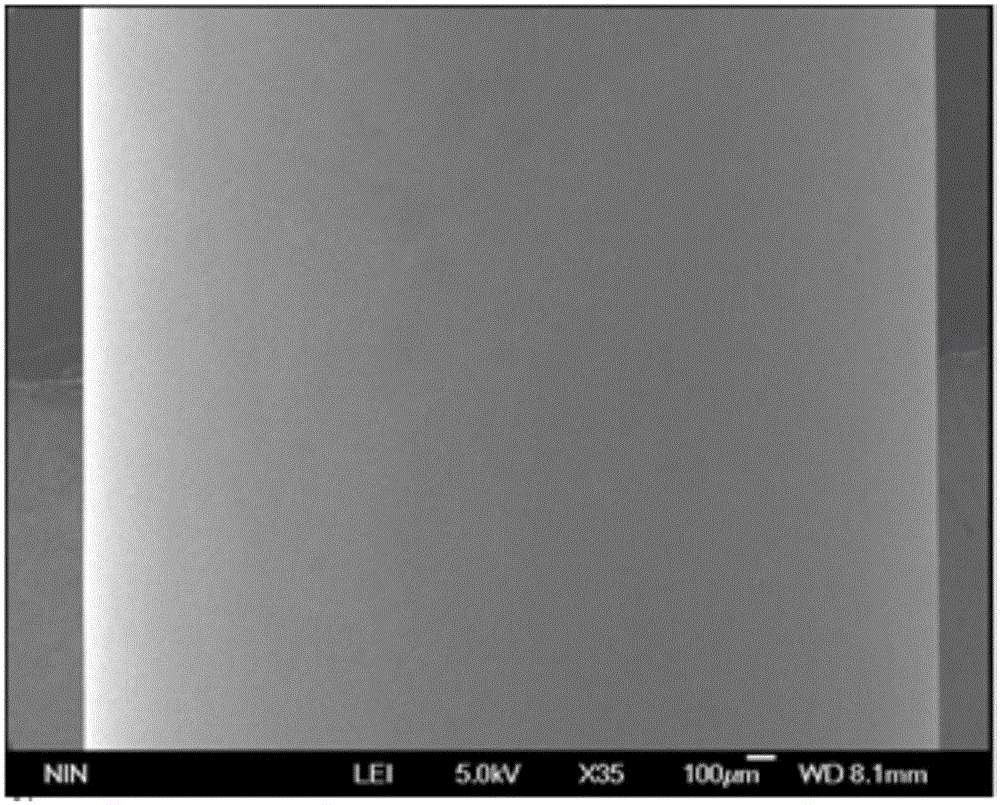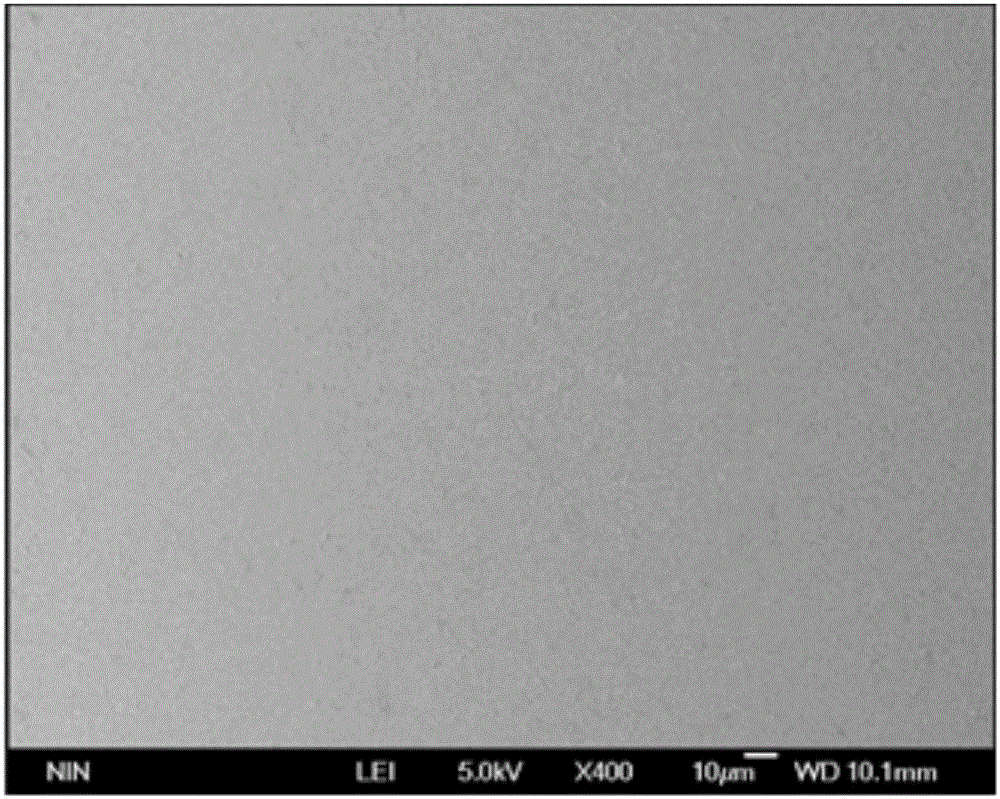Electrolytic polishing liquid of tungsten alloy or molybdenum alloy and electrolytic polishing method
An electrolytic polishing and molybdenum alloy technology, applied in the field of electrolytic polishing of refractory metals, can solve the problems of low polishing efficiency, storage and use hazards, etc., and achieve the effect of improving polishing quality, easy storage, and smooth and bright alloy surface
- Summary
- Abstract
- Description
- Claims
- Application Information
AI Technical Summary
Problems solved by technology
Method used
Image
Examples
Embodiment 1
[0024] The electrolytic polishing solution of molybdenum alloy in this embodiment is prepared by mixing sodium hydroxide, sodium carbonate, sodium molybdate and water, wherein the concentration of sodium hydroxide is 20g / L, the concentration of sodium carbonate is 5g / L, and sodium molybdate The concentration is 1.5g / L.
[0025] Adopt the electropolishing fluid of present embodiment to be about 2.3cm to surface area 2 The test section of the rod-shaped molybdenum alloy room temperature tensile sample is electrolytically polished. The specific process is: the rod-shaped molybdenum alloy to be treated is placed in the electrolytic polishing solution as the anode, the tubular stainless steel is used as the cathode, and the rod-shaped molybdenum alloy is placed in the tubular stainless steel. At the center of the interior, control the temperature of the electrolytic polishing solution to 45°C, adjust the voltage of the DC stabilized power supply to 18.5V, and the current density to...
Embodiment 2
[0028] The electrolytic polishing solution of tungsten alloy in this embodiment is prepared by mixing sodium hydroxide, sodium carbonate, sodium molybdate and water, wherein the concentration of sodium hydroxide is 35g / L, the concentration of sodium carbonate is 8g / L, and sodium molybdate The concentration is 1g / L.
[0029] Adopt the electropolishing fluid of present embodiment to be about 2.3cm to surface area 2 The test section of the rod-shaped tungsten alloy room temperature tensile sample is electrolytically polished. The specific process is: the rod-shaped tungsten alloy to be treated is placed in the electrolytic polishing solution as the anode, the tubular stainless steel is used as the cathode, and the rod-shaped tungsten alloy is placed in the tubular stainless steel. At the center of the interior, control the temperature of the electrolytic polishing solution to 40°C, adjust the voltage of the DC stabilized power supply to 25V, and the current density to 2A / cm 2 , ...
Embodiment 3
[0032] The electrolytic polishing solution of molybdenum alloy in this embodiment is prepared by mixing sodium hydroxide, sodium carbonate, sodium molybdate and water, wherein the concentration of sodium hydroxide is 25g / L, the concentration of sodium carbonate is 5g / L, and sodium molybdate The concentration is 1.5g / L.
[0033] Adopt the electropolishing fluid of present embodiment to be about 4.5cm to surface area 2 The molybdenum alloy metallographic sample is electrolytically polished, and the specific process is as follows: the molybdenum alloy metallographic sample to be treated is placed in the electrolytic polishing solution as the anode, and the flat stainless steel is used as the cathode, and the temperature of the electrolytic polishing solution is controlled at 30°C , adjust the voltage of the DC stabilized power supply to 17.5V, and the current density to 2A / cm 2 , the surface of the molybdenum alloy metallographic sample is electropolished, the polishing time of ...
PUM
 Login to View More
Login to View More Abstract
Description
Claims
Application Information
 Login to View More
Login to View More - R&D
- Intellectual Property
- Life Sciences
- Materials
- Tech Scout
- Unparalleled Data Quality
- Higher Quality Content
- 60% Fewer Hallucinations
Browse by: Latest US Patents, China's latest patents, Technical Efficacy Thesaurus, Application Domain, Technology Topic, Popular Technical Reports.
© 2025 PatSnap. All rights reserved.Legal|Privacy policy|Modern Slavery Act Transparency Statement|Sitemap|About US| Contact US: help@patsnap.com


